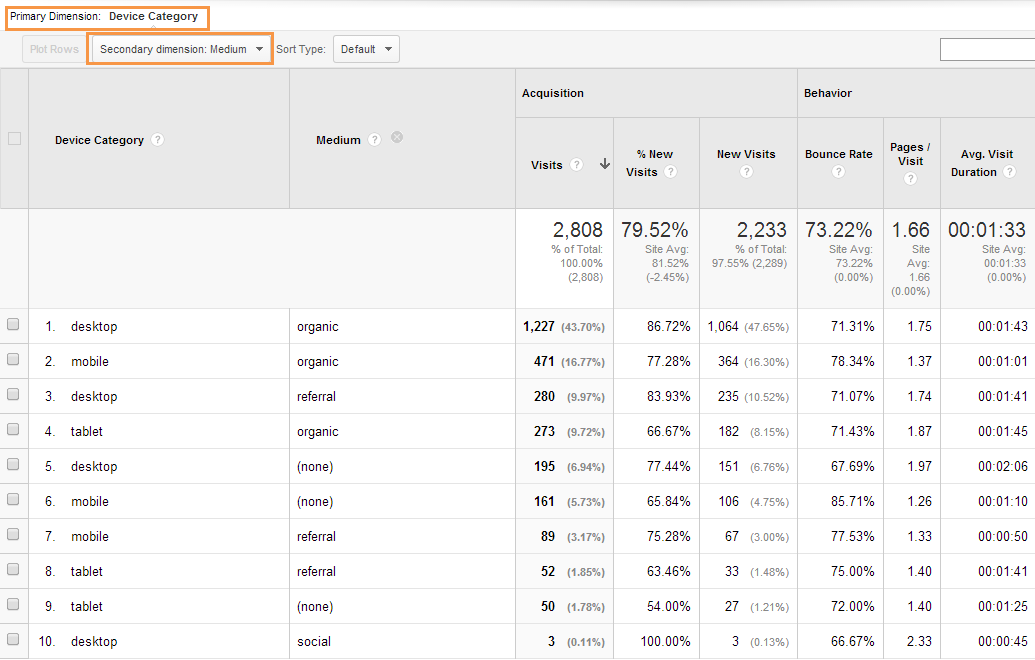Using Secondary Dimension in Google Analytics for Improved Reporting
Unlocking the Power of Secondary Measurement Analytics for Enhanced Information Insights and Decision-Making
In the world of data analytics, key dimensions commonly take the limelight, but truth deepness of understandings lies within the world of secondary dimensions. These additional data points supply a nuanced point of view that can light up connections and patterns not easily obvious at initial look. By taking advantage of the power of additional measurement analytics, companies can introduce surprise patterns, uncover connections, and essence a lot more purposeful verdicts from their information. The potential for enhanced decision-making with the usage of these second measurements is vast, guaranteeing a much deeper understanding of intricate data sets and leading the way for even more enlightened critical selections.
Value of Additional Dimensions
Exploring the value of additional dimensions in analytics unveils the surprise layers of information understandings critical for educated decision-making in different domain names. Second dimensions offer a deeper understanding of key information by supplying additional context and point of views. By incorporating additional measurements right into analytics, organizations can remove much more nuanced and extensive understandings from their datasets.
One secret importance of additional dimensions is their ability to section and categorize key data, enabling an extra detailed analysis of specific parts within a dataset. When looking at the information as a whole, this division enables companies to identify patterns, trends, and outliers that may not be noticeable. In addition, second measurements help in uncovering correlations and dependences between different variables, leading to even more accurate projecting and anticipating modeling.
In addition, second dimensions play a vital function in improving data visualization and reporting. By including second dimensions to visualizations, such as graphes or graphs, experts can develop more informative and interesting representations of information, promoting much better communication of searchings for to stakeholders. Overall, the integration of second dimensions in analytics is crucial in unlocking the complete potential of data and driving evidence-based decision-making.
Secret Advantages of Making Use Of Second Dimensions
Using additional dimensions in analytics uses organizations a strategic benefit by enhancing the depth and granularity of information understandings. One key benefit of integrating second dimensions is the ability to sector and filter data, permitting a much more detailed analysis of particular facets within a dataset. This division enables companies to gain an extra nuanced understanding of their target market, performance metrics, and other vital information factors. By exploring information making use of additional dimensions such as time, place, tool kind, or customer demographics, companies can reveal patterns, fads, and correlations that may or else continue to be surprise.
Moreover, the use of secondary dimensions improves the context in which primary information is analyzed. By leveraging second measurements in analytics, organizations can harness the full capacity of their information to drive far better decision-making and achieve their service purposes.
Advanced Information Analysis Techniques
A deep study innovative information analysis techniques discloses sophisticated approaches for removing beneficial understandings from complex datasets. One such strategy is equipment knowing, where formulas are utilized to determine patterns within information, anticipate end results, and make data-driven decisions. This technique allows for the automation of logical design building, allowing the processing of huge volumes of data at a faster speed than conventional techniques.
Another advanced technique is predictive analytics, which makes use of analytical algorithms and device knowing strategies to forecast future end results based upon historic data. By evaluating patterns and trends, companies can expect client habits, market trends, and potential risks, encouraging them to make proactive decisions.
Moreover, text mining and sentiment analysis are valuable techniques for drawing out insights from disorganized data sources such as social media remarks, client testimonials, and study feedbacks. By examining message data, companies can recognize client viewpoints, determine arising trends, and improve their solutions or products based upon responses.
Enhancing Decision-Making With Secondary Measurements

Enhancing decision-making via additional measurements allows organizations to make more educated and targeted critical choices. By segmenting consumer data based on second dimensions like purchasing background or interaction levels, companies can tailor their advertising and marketing methods to specific audience sections, leading to enhanced conversion prices and client contentment. Second measurements can assist determine connections and relationships between different variables, making it possible for organizations to make data-driven decisions that drive growth and productivity.
Carrying Out Second Dimension Analytics
When incorporating additional dimensions in analytics, companies can open much deeper understandings that drive critical decision-making and improve general efficiency. This entails recognizing the particular concerns the organization seeks to address and the data points called for to address them.

Additionally, organizations need to leverage advanced analytics tools and technologies to streamline the procedure of incorporating second measurements. These tools can automate data processing, evaluation, and visualization, enabling companies to concentrate on translating understandings instead of hands-on information control.
Conclusion
To conclude, secondary dimension analytics play a vital duty in improving data understandings and decision-making procedures. By utilizing advanced data evaluation methods and implementing secondary dimensions efficiently, organizations can open the power of their information to drive critical business choices. The crucial benefits of utilizing secondary dimensions can not be overemphasized, as they give a deeper understanding of data trends and connections. It is crucial for companies to take advantage of additional dimension analytics to stay competitive in today's data-driven landscape.
In the world of data analytics, main dimensions often take the spotlight, but the true depth of understandings lies within the realm of second measurements.Making use of secondary measurements in analytics supplies organizations a calculated advantage by boosting the deepness and view it now granularity of data understandings. By leveraging secondary measurements in analytics, companies can harness the full potential of their information to drive far better decision-making and attain their service goals.
Carrying out information recognition procedures and regular audits can help keep data quality and reliability.
By using sophisticated data evaluation techniques and implementing second measurements properly, organizations can open the power of their information to drive calculated service choices.